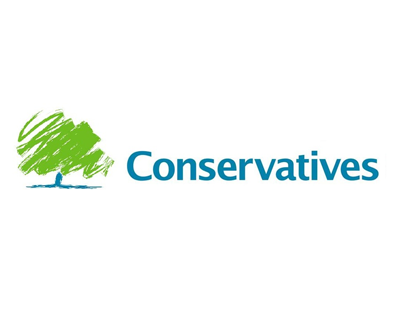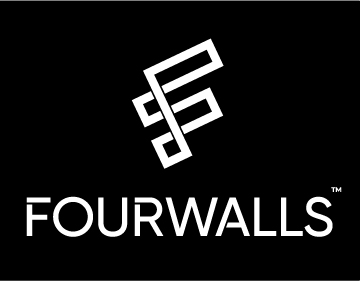An agency specialising in land and planning claims that campaigners in favour of maintaining the green belt must accept that some of it will have to be built on.
Aston Mead says that building on green belt land has become necessary if a solution for the UK's housing crisis is to be found.
The comments come in response to a report released by Campaign to Protect Rural England (CPRE) last week.
The report alleges to have uncovered blueprints for almost 125,000 homes on over 200 green belt land sites around London.
It says the threatened areas include over 200,000 acres in Hertfordshire, 300,000 acres in Surrey and almost 250,000 acres in Essex.
CPRE is adamant that the 'threats are real' as most of the blueprints are allocated in Local Plan documents.
“It’s time that campaign groups like the CPRE stopped making knee-jerk reactions to every proposed bit of building on green belt land – especially when some of these Local Plans haven’t even been adopted," says Adam Hesse, Aston Mead's land and planning director.
Hesse says there is a misconception that green belt land has an ecological and agricultural value.
“The truth is that there are different ‘grades’ of greenbelt out there – some of which should be protected at all costs."
"But there’s a lot of what I call ‘grubby’ greenbelt – especially around road junctions and train stations – which most people would be surprised to discover was even considered to be green belt in the first place,” he explains.
The land agent uses the example of a patch of land in Surrey, located near Junction 11 of the M25.
Hesse says this site has 'all the right ingredients' to receive planning permission and could fit over 200 homes.
"Most people wouldn’t even realise this is green belt land and few people would miss it if it was built on.”
He goes on to say that the idea of protecting land in major urban areas is an 'outdated' and 'failed' experiment.
"Instead of preventing urban sprawl, the green belt has pushed house building into genuinely valuable parts of the countryside that really should be protected. All of which has meant longer commuting times, increased expense and more pollution."
Hesse argues that the green belt now acts as a 'wall' which confines urban residents at higher densities and has contributed to rising house prices.
"If we are going to solve this country’s housing crisis, some building on green belt land is now inevitable,” he says.






/house%20of%20lords_jpg%20400%20x%20310.png)








%20-%20IMAGE%20Client%20Accounting%20%E2%80%93%20what%20are%20your%20options.jpg)



%20A%20property%20tale%20for%20our%20times.png)








Join the conversation
Jump to latest comment and add your reply
No, this misguided person is wrong. Why should we destroy more of our country's ability to clean the polluted air, especially in and around London? - because local authorities refuse to demand landlord licencing and inspect rented properties ? - and fines/punishments for slum landlords are so very low! The solution is not to build more, it is to make more of what we already have, and we do have a lot to improve and adapt. Throughout this land, including the South East, there is brown space, near to utilities, ready to be developed, and properties ready to be updated. We can do better than this can't we?
I agree with this. There are plenty of brownfield sites that could be built on, abandoned or derelict homes brought back into use and disused office space that could be repurposed. Near where I live there are a number of empty or boarded up shops that have been that way for years. Whole parades of shops in some cases, just sitting there, wasting away. What is the point of that?
Either they can be converted back to past glories - when they were cafes, shops and offices - or they could be re-used for housing. The idea that there aren't already existing buildings ripe for refurbishment and conversion is nonsense - there's plenty! We need to speed up the planning process to make this possible. I can't understand why many of these old shops are left to rot away, entirely redundant.
What's more, clamping down on Buy to Leave and empty homes would also have a major impact. There are homes that are either out of use - or being used very, very sparingly (or not at all) by overseas buyers who are only interested in seeing its value rise - that could be used for new housing. Let's have a look at second home ownership, too - people who own a holiday home in Cornwall, Devon, the Lake District or the Cotswolds and use it for a couple of months of the year; could this be used for rental purposes at other points?
Despite this, however, I don't entirely disagree with the point made in the article. As far as I understand it, there are parts of the green belt that can be barely considered green belt at all. In some cases, they aren't even green. If this is the case, then it makes sense to look at ways of utilising these spaces - alongside brownfield sites, bringing empty homes back into use and clamping down on Buy to Leave - to help improve the housing crisis.
For environmental and social reasons, the green belt should be protected at all costs, but with some innovation, clever planning and a more flexible system in place, other alternatives can be sourced. It doesn't feel as if all avenues have been exhausted as of yet.
I also think developers and house-builders are guilty of sitting on land to ensure its value goes up. It's in their interests to slow the whole house-building process, no matter how much they say otherwise.
I can't believe how someone who does land and planning for a living is saying this. Yet alone one who is meant to be respected in this business. I agree with the comment above mine entirely. There are PLENTY of development sites in city's in the U.K. Lack of creativity on behalf of planners and such as him and lack of developers wanting to take on even
*slightly complicated sites is the problem. Paris managed to create 50,000 new homes in 2 years just by allowing development of existing roof spaces. grab your bike or go for a walk anywhere in London and see for yourself. It's all there. Funding for smaller local developers who would take on smaller sites would help massively.
Of course it's possible to build enough new homes. They managed it perfectly well after World War II, when we were completely broke. What is lacking, however, is the will.
Much easier to throw up a load of luxury apartments and swanky penthouses that appeal to rich investors and the buy-to-leave brigade. Much more difficult to invest in social housing and affordable homes. The government like gimmicky schemes; decisive action, not so much.
We can't carry on as we are forever - with prices continuing to rise at astronomical rates. Surely we will reach a breaking point? Prices being this high is good for no-one in the long-term - not even sellers and landlords. And certainly not estate agents.
Lots of agents and experts talk about massive house price rises as a good thing - a sign of a market performing very strongly - but that doesn't show the whole picture. Everyone talks about a housing crisis and how we need to solve it, but at the same time everyone is delighted with prices rising by alarming rates year on year and home ownership becoming a distant pipe dream for many. Can't be both.
"Aston Mead says that building on green belt land has become necessary if a solution for the UK's housing crisis is to be found."
Why's that? Have all other options been explored properly? No, didn't think so.
As Rob and the other posters outline above, there are other ways in which to go about solving the housing crisis before you have to think about building on the green belt. All manner of abandoned and derelict buildings that have no purpose whatsoever can be found all over the country. I understand that some of these may be listed, beyond repair or involved in legal wranglings, but surely the majority of them can be easily and quickly converted if the desire is there?
I appreciate you are only taking about small patches of land that shouldn't even be classified as green belt. But what one person thinks of as green belt, another might not. That's when difficulties arise. You start building on the green belt, you set a dangerous precedent.
The thing is, everybody wants to live next to green belt whilst conveniently overlooking the fact that their house is probably built on what was once somebody else's green belt. What, if anything, could/should be done about that?
Not, of course, that Aston Mead have any personal Interest in this.
Please login to comment